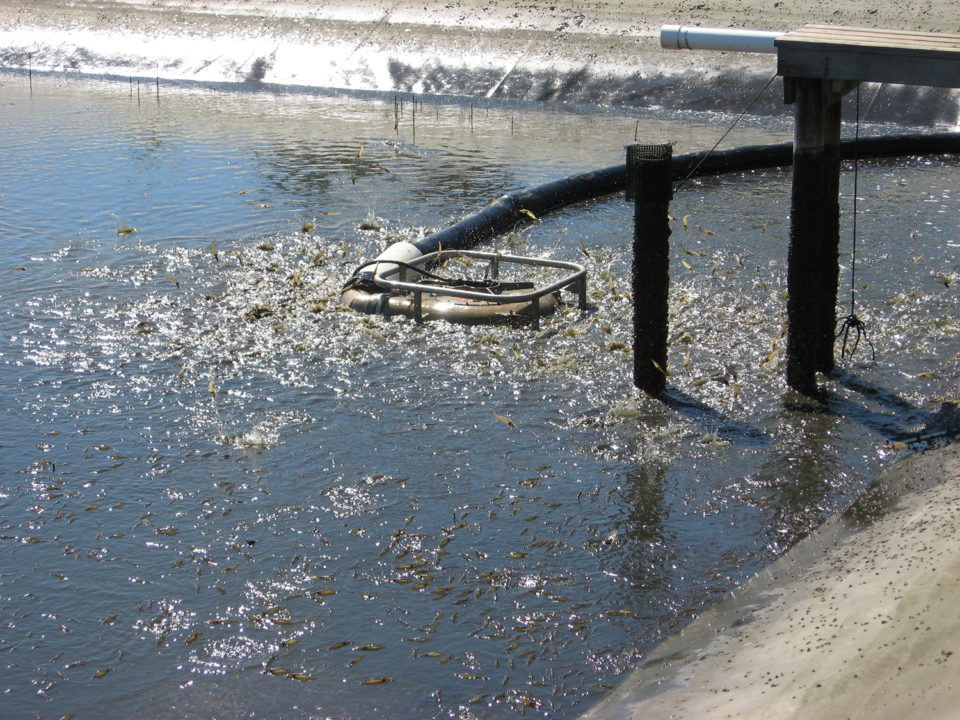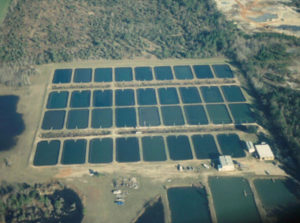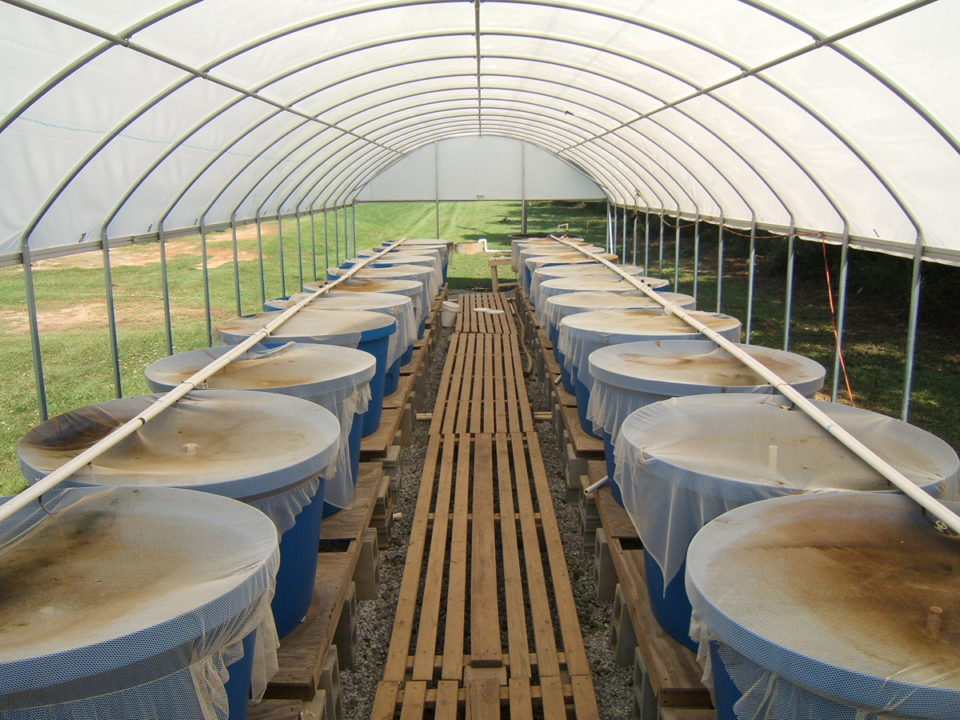Inclusion of 150 grams per kilo result in excellent production performance

Current pressures of farmers include both reductions in production cost and concerns over social aspects over the use of marine ingredients. One of the most common practices is to replace fishmeal with a combination of plant and animal products.
We have a long history of the use of poultry byproduct meal in combination with soybean meal as a replacement for fishmeal across numerous species including shrimp. Further cost improvements can be made by using other complimentary ingredients such as those from the ethanol industry.
Grain distillers dried yeast (GDDY) is a co-product obtained from the wet milling of corn kernels from the bio-ethanol industry with a great deal of potential as an environmentally sustainable by product. In this process the fiber and protein fractions of the corn kernel are removed prior to fermentation, the purified corn starch is then fermented yielding ethanol and yeast. The yeast is separated and dried for animal feed. Results under laboratory conditions have demonstrated good results giving rise to the need to evaluate this product under production conditions.
Therefore, the objectives of our study – with cooperation and support from Archer Daniels Midland Company (ADM) and HATCH funding, and with the help of many at the Claude Peteet Mariculture Center – were able to evaluate the response of Pacific white shrimp (Litopenaeus vannamei) to increasing levels of GDDY in outdoor pond production systems using a commercially prepared feed. This article summarizes the original publication (doi:10.1111/anu.12359).
Experimental setup
Two trials were conducted at the Alabama Department of Conservation and Natural Resources, Marine Resources Division, Claude Peteet Mariculture Center in Gulf Shores (Alabama, USA).
Two growth trials were carried out in parallel, one a pond trial and the other an outdoor tank trial. Four practical diets were produced by Rangen® (Angleton, Texas, USA) under commercial conditions and formulated to contain solvent extracted soybean meal as the primary protein source with increasing levels of GDDY (0, 50, 100, and 150 grams per kilo of diet). To improve the amino acid balance of the diets, poultry byproduct meal and corn gluten meal were included at 80 and 48 grams per kilo of diet, respectively
Pacific white shrimp post-larvae (PL) were sourced from a commercial hatchery, Shrimp Improvement System, Islamorada (Florida, USA) reared in a nursery tanks for approximately two weeks (38.1 ± 4.26 mg mean weight and stocked into 16 production ponds at a density of 30 shrimp m–2 (total of 30,000 shrimp per pond) and reared over a 16-week pond culture period.

Rations were divided to two feedings per day, early morning (8 a.m.) and late afternoon (4 p.m.). Feeding strategy for the first four weeks was based on previous studies that assumed that post-larvae fed on a combination of prepared feeds and primary productivity. Thus, during this period, feed inputs were designed to provide a stable source of food and stimulate natural productivity in the ponds.
Thereafter, feed input was calculated based upon an expected weight gain of 1.3 grams per week, an estimated FCR of 1.2, and a survival rate of 75 percent during the pond culture period, which had a uniform mortality rate of 1.47 percent per week. At the conclusion of the pond production cycle the shrimp were drain harvested and the production quantified.
Parallel to the pond trials an outdoor green water tank trail was conducted. The outdoor tank system was a semi-closed recirculating system which consisted of a central reservoir (800-L) with a biological filter, a 0.33-hp circulation pump, and 20 circular polyethylene tanks (0.85 meters height × 1.22 meters upper diameter, 1.04 meters lower diameter). Another sump pump was used to move water from one of the production ponds to the central reservoir at a rate of 8 L min-1 to transfer and maintain natural productivity in the tank based system to mimic a production pond setting. Juvenile L. vannamei (3.05 ± 0.22 grams, initial weight) were randomly selected and stocked at a rate of 30 shrimp per 750-L tank. Each tank and the central reservoir were provided with two air stones connected to a 0.5-hp regenerative blower to supply aeration.
Five test diets were randomly assigned amongst the 20 tanks. The four experimental diets used in the production ponds were tested using four replicates per diet. A fifth commercial diet (Rangen® Shrimp Grower, 35 percent protein, 8 percent lipid), was included as a commercial reference using four replicate tanks. Juvenile shrimp were offered test diets twice per day at 8 a.m. and 4 p.m. Daily feed input was calculated based upon an expected weight gain of 1.3 grams per week and an estimated FCR of 1.2.
For detailed information on experimental diets, growth trials and statistical analyses, please refer to the original publication.

Results and discussion
Yeast is an ingredient that can be produced from a wide range of process and conditions resulting in a wide variety of yeast products on the market. Grain distillers dried yeast from corn wet milling is a promising protein source obtained from the bioethanol industry, which has been evaluated in a couple of fish species and recently under laboratory conditions in shrimp with good success. As yeast products have a great deal of potential and there is limited data we chose to continue the evaluation of it’s us in production diets. Hence, four diets were formulated to contain increasing levels of GDDY and evaluated in L. vannamei, reared in outdoor tanks or production ponds. The production pond trial was carried out in research ponds managed under standardized condition over a 16-week grow-out cycle.
The feeds were offered to shrimp once they were a couple of grams in size and continued though the production cycle. At the conclusion of these trials, mean final weight ranged from 19.77 to 23.05 grams, yield ranged between 4,760 and 5,606 kilos per hectare, survival ranged from 69.7 to 89.4 percent, and feed conversion ratio (FCR) was between 1.02 and 1.23. The same four diets and a commercial reference diet were offered to shrimp maintained in outdoor tanks over a 12-wk period. Shrimp reared in the outdoor tanks confirmed the results of the pond trial. Mean final weight ranged between 18.12 and 18.97 grams, survival ranged from 93.3 to 98.3 percent, and FCR was between 1.25 and 1.29. In both trials, there were no significant differences regarding mean final weight, FCR, and survival among dietary treatments. Based on this study, GDDY up to 150 g kg–1 of diet can be used in L. vannamei commercial feed formulation.
From the lab into the pond, our results showed that GDDY in practical diets for L. vannamei up to 150 grams per kilo will not compromise production performance. In our laboratory study, Achupallas (2016) demonstrated in a clear water system without natural foods that GDDY up to 300 grams per kilo of diet can be used in shrimp formulations without causing any impact on growth performance.
In summary, the results of the reported study indicate that GDDY can be used as an alternative protein source in combination with SE-SBM in diets formulated for L. vannamei reared under a variety of research conditions
Perspectives
The results from our present study confirm that the inclusion of GDDY up to 150 grams per kilo of diet in shrimp feeds will not compromise production performance in grow-out ponds and tanks.
References available from corresponding author.
Authors
-
Julio M. Achupallas
School of Fisheries, Aquaculture and Aquatic Sciences
Auburn University
Auburn, AL 36849-5419 USA -
Yangen Zhou
School of Fisheries, Aquaculture and Aquatic Sciences
Auburn University
Auburn, AL 36849-5419 USA -
A. Davis, Ph.D.
Alumni Professor
Corresponding author
School of Fisheries, Aquaculture and Aquatic Sciences
Auburn University
Auburn, AL 36849-5419 USA[117,100,101,46,110,114,117,98,117,97,64,97,100,115,105,118,97,100]
Tagged With
Related Posts

Health & Welfare
Grain distillers dried yeast in practical diets for juvenile Pacific white shrimp
A study evaluated the production response of Pacific white shrimp fed diets containing increasing levels of grain distillers dry yeast in two growth trials.

Aquafeeds
A new nutrient for aquaculture, from microbes that consume carbon waste
Biotechnology firm NovoNutrients aims to produce a line of nutraceutical aquafeed additives as well as a bulk feed ingredient that can supplement fishmeal. Its process includes feeding carbon dioxide from industrial gas to a “microbial consortium” starring hydrogen-oxidizing bacteria.

Aquafeeds
A look at corn distillers dried grains with solubles
Corn distillers dried grains with solubles are an economical source of energy, protein and digestible phosphorus to reduce feed costs and fishmeal usage.

Aquafeeds
Bridging the omega-3 gap with methane, microalgae
Innovation is leading to new ingredient options for renewable sources of omega-3 fatty acids. But Replicating long chain fatty acids is a tall order, Advocate contributor Lisa Duchene discovered.


